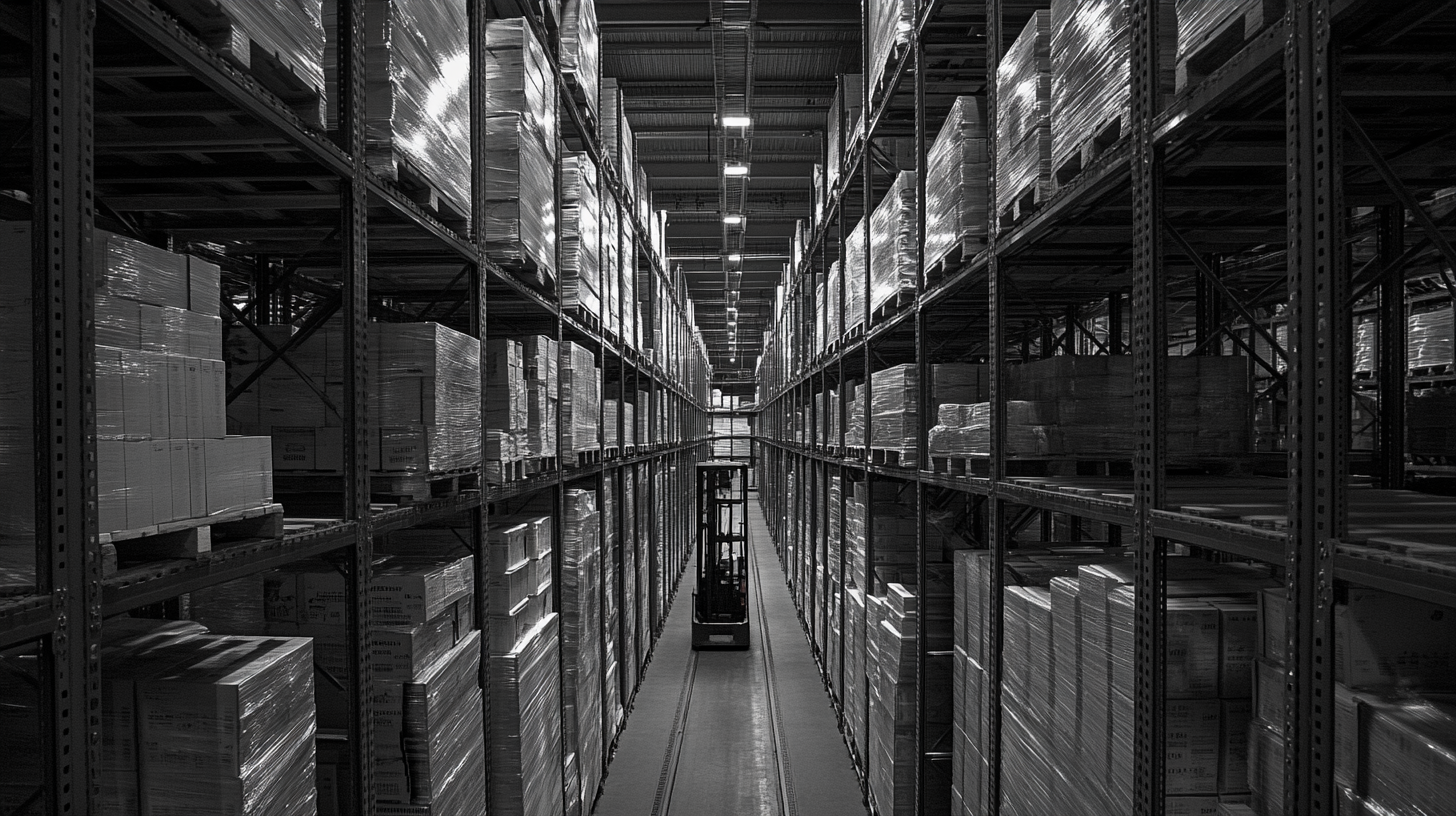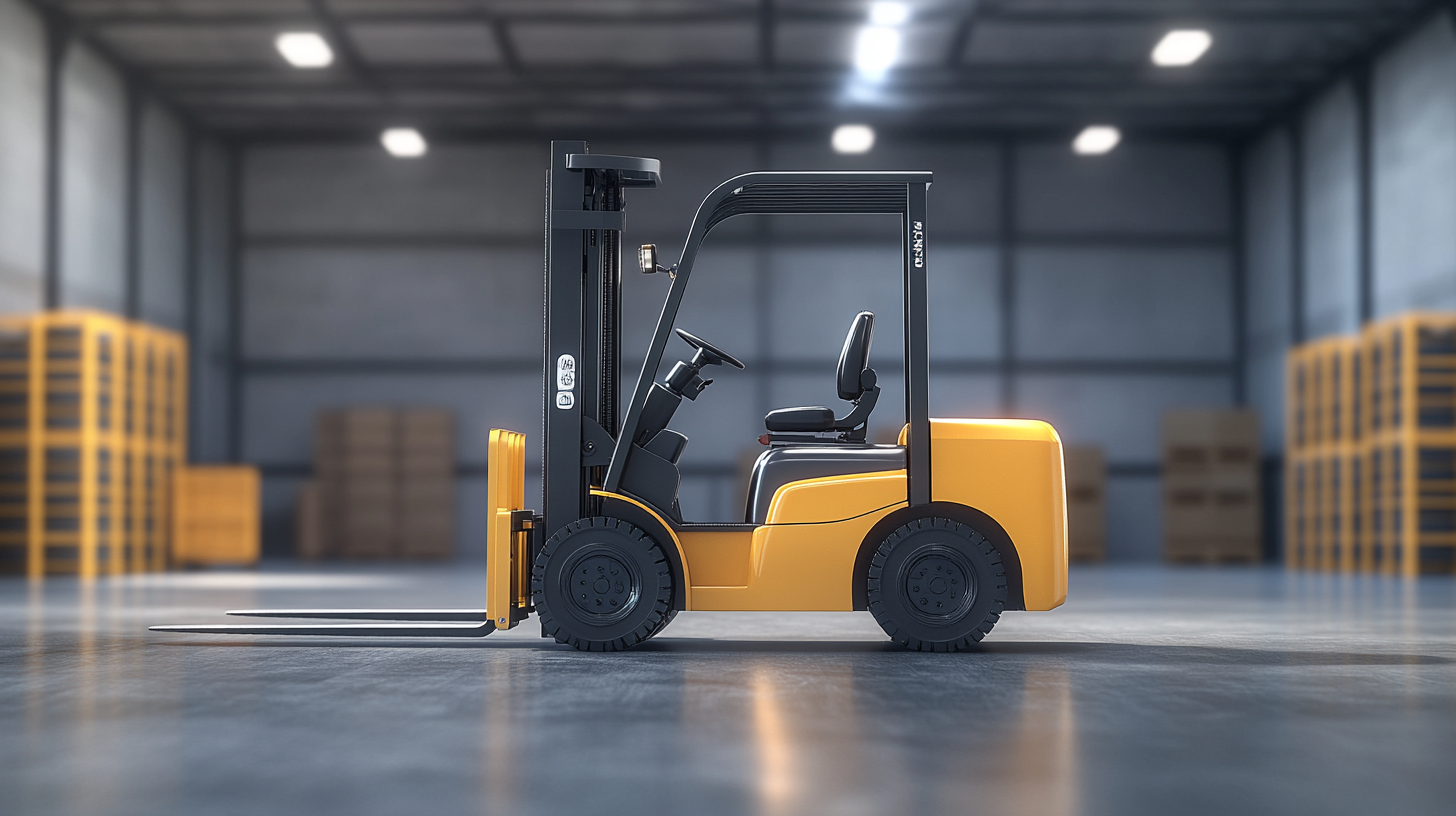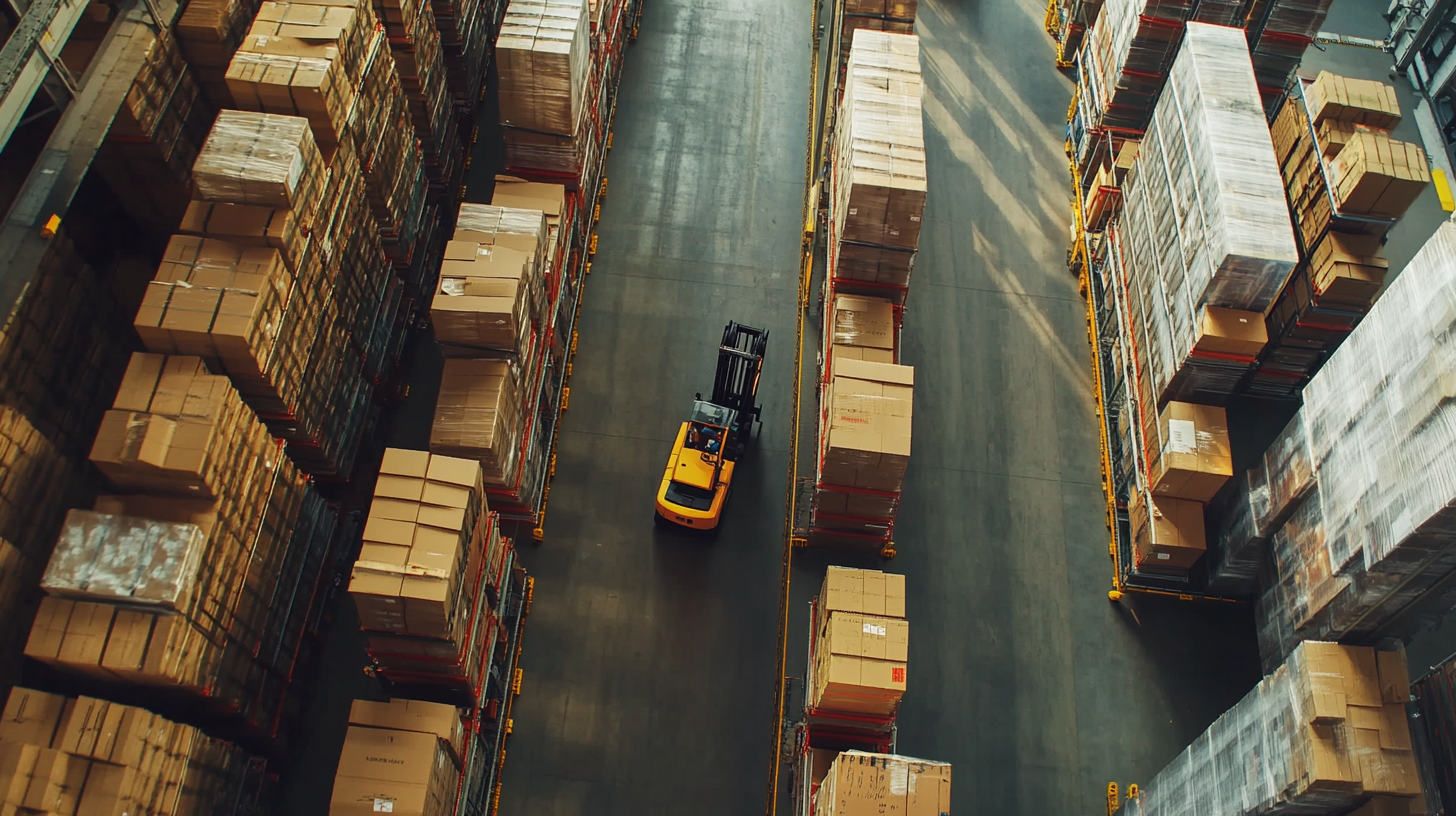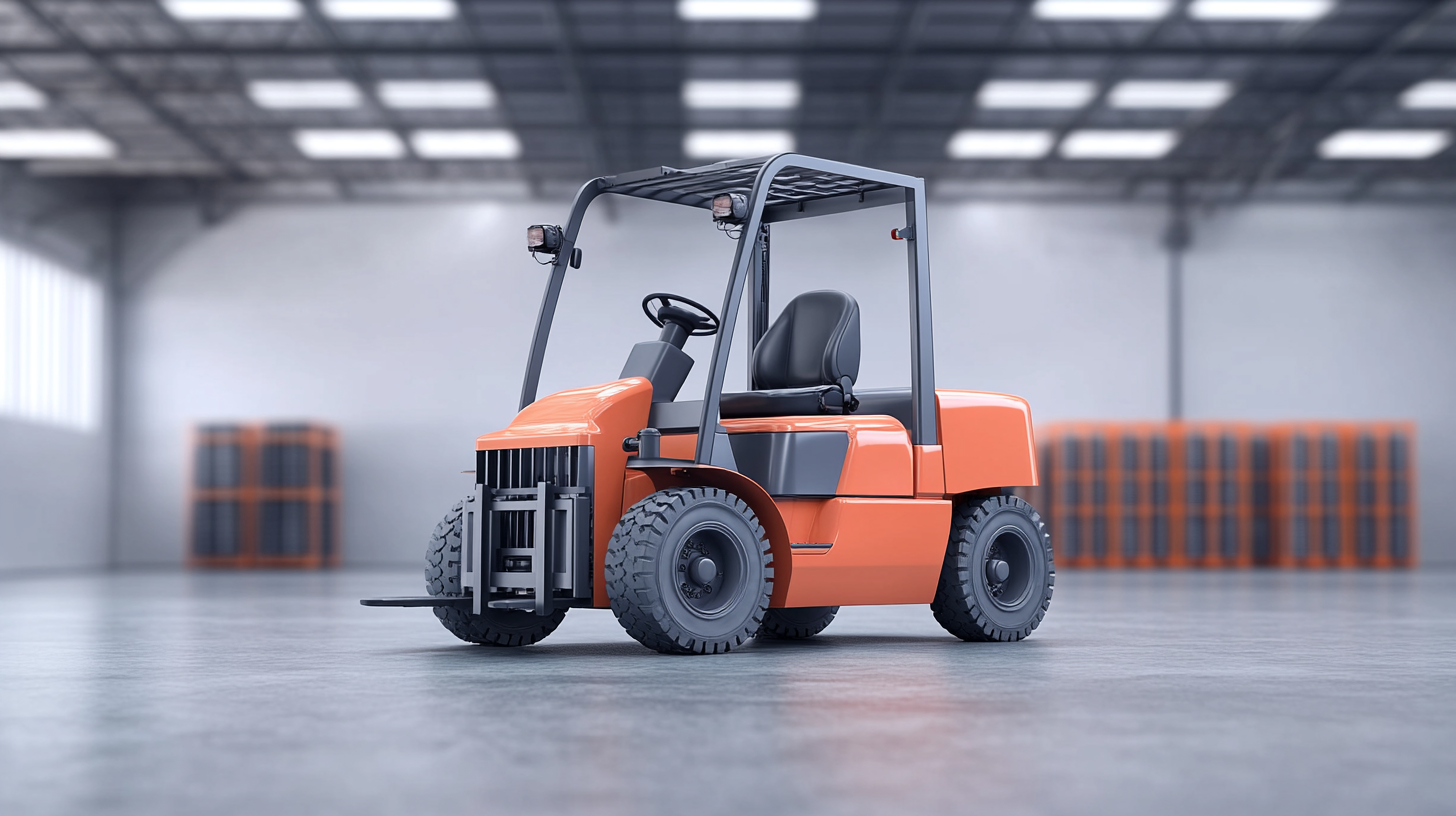Maximizing Warehouse Efficiency with Aisle Forklifts A Comprehensive Guide for Global Buyers
In the ever-evolving landscape of logistics and warehousing, the pursuit of efficiency has never been more critical. According to the Warehousing Education and Research Council (WERC), optimizing warehouse operations can lead to significant cost savings of up to 30%. One key player in enhancing this efficiency is the Aisle Forklift, a specialized piece of equipment designed to navigate narrow aisles while handling palletized goods. As e-commerce continues to surge, with Statista reporting a projected global online sales growth to over $6 trillion by 2024, the demand for agile and space-efficient solutions within warehouses is paramount.
The integration of Aisle Forklifts into warehouse management systems not only maximizes storage capacity but also enhances safety and productivity. A report from the Material Handling Industry Association (MHIA) indicates that the use of narrow aisle forklifts can increase storage density by 40%, making it an essential asset for businesses striving to remain competitive in a dynamic market. This comprehensive guide aims to equip global buyers with the insights needed to make informed decisions about Aisle Forklift investments, ultimately driving operational success and meeting the challenges of modern supply chains.

Understanding Aisle Forklifts: Types and Applications for Warehouse Operations
Aisle forklifts, also known as narrow aisle lift trucks, have become increasingly vital for warehouse operations, maximizing space utilization while improving operational efficiency. As the global forklift market continues to expand, from a projected USD 125+ billion by 2030, the differentiation among various types of forklifts, especially aisle forklifts, is crucial for businesses looking to optimize their logistics processes. According to industry forecasts, the narrow aisle forklift segment is predicted to thrive, driven by innovations in warehouse design and materials handling technology. The various types of aisle forklifts serve distinct applications within warehouses. Class II forklifts, which include narrow-aisle trucks, are tailored for high-density storage environments, enabling operators to navigate tight spaces efficiently. Studies indicate that implementing advanced systems like RF-based processes can reduce travel distance by 27-37%, further enhancing productivity—a critical factor in today's fast-paced supply chains. As businesses adapt to e-commerce demands and just-in-time inventory practices, the need for high-efficiency aisle forklifts is set to rise. In the context of market growth, the Saudi Arabia forklift market alone is projected to reach USD 912.1 million by 2033. This growth underscores the significance of aisle forklifts in facilitating smooth and cost-effective operations across various industries, including mining and manufacturing. As innovations continue to reshape the materials handling sector, businesses must stay informed of the latest trends to make strategic investments in equipment that maximizes warehouse efficiency.

Key Benefits of Aisle Forklifts in Enhancing Warehouse Efficiency
Aisle forklifts have emerged as crucial assets in modern warehouse management, especially for businesses looking to maximize efficiency and productivity. According to a report by the Material Handling Industry of America (MHIA), utilizing narrow aisle forklifts can lead to space utilization improvements of up to 40%. This effective use of space allows warehouses to store more goods without the need for costly expansions, ultimately driving down operational costs.
Moreover, aisle forklifts enhance picking speed, significantly impacting overall warehouse throughput. A study by the Warehouse Education and Research Council (WERC) indicates that warehouses adopting specialized forklifts see an average increase in picking rates of 25%. This increase not only streamlines operations but also improves order fulfillment times, providing a competitive edge in an increasingly demanding market.
Another compelling benefit of aisle forklifts is their ability to reduce operational risks. These machines are designed for maneuverability in tight spaces, reducing the chances of collisions and accidents that could lead to costly damages or injuries. The Occupational Safety and Health Administration (OSHA) reports that proper training and use of equipment like aisle forklifts can reduce workplace incidents by approximately 30%, enhancing overall employee safety and reducing insurance costs for businesses.
By investing in aisle forklifts, companies can not only enhance their immediate operational efficiency but also position themselves for longer-term success in a competitive landscape. Adopting these advanced solutions enables warehouses to adapt to the growing demands of e-commerce and consumer expectations, ultimately leading to sustainable growth.

Factors to Consider When Choosing Aisle Forklifts for Your Warehouse
When selecting aisle forklifts for your warehouse, several crucial factors need to be taken into consideration to optimize both efficiency and safety. One key factor is the aisle width. According to a report from the Material Handling Industry of America, narrower aisles (ranging from 5 to 8 feet) can increase storage density by up to 30%, but these also demand more compact and agile forklifts that can maneuver within tighter spaces. Understanding the specific aisle dimensions in your facility will guide your choice in forklift type, ensuring you maximize storage while maintaining operational fluidity.
Another critical element is the weight capacity of the aisle forklift. Statistics indicate that warehouses often switch to high-density storage solutions, necessitating forklifts with varying load capacities, typically ranging from 1,500 to 5,000 pounds for standard models. According to a study published by the National Institute of Standards and Technology, selecting the right forklift that can adequately handle your heaviest loads prevents both material damage and potential safety hazards. Buyers should always assess load characteristics and height requirements to ensure compliance with operational demands.
Battery technology is also a significant consideration, especially as warehouses increasingly adopt green practices. A study by the Forklift Truck Association highlights that lithium-ion batteries can enhance operational efficiency by providing up to 35% more energy storage compared to traditional lead-acid batteries. Additionally, these advanced batteries offer longer operational periods and less downtime for recharging, making them ideal for busy warehouses. Choosing forklifts equipped with modern battery technology will reduce overall operational costs and improve productivity levels.

Best Practices for Operating Aisle Forklifts Safely and Efficiently
Operating aisle forklifts safely and efficiently is crucial for maximizing warehouse productivity. According to the Occupational Safety and Health Administration (OSHA), forklift accidents contribute significantly to workplace injuries, with an estimated 34,900 injuries and 85 fatalities occurring each year in the United States. Implementing best practices such as proper training and certification for operators can drastically reduce these statistics. A structured training program, adhering to OSHA guidelines, ensures that operators are well-versed in the operation of aisle forklifts, including the importance of load stability and maintaining clear visibility while maneuvering in tight spaces.
In addition to training, the design and layout of the warehouse play a critical role in the safe operation of aisle forklifts. A recent report by the Material Handling Industry of America (MHIA) indicates that optimizing aisle width can improve both safety and efficiency, allowing for smoother traffic flow and reduced risk of collisions. Narrower aisles, which are often a necessity for maximizing storage space, can be navigated effectively with aisle forklifts, but they require careful planning to ensure that operators have adequate room to maneuver. Strategic placement of shelving and equipment can enhance accessibility while minimizing congestion, contributing to a safer working environment.
Furthermore, regular maintenance of aisle forklifts is essential in preventing operational failures that could lead to accidents. According to industry standards, forklifts should undergo daily inspections, including checks on brakes, steering, and load handling capabilities. Keeping a detailed maintenance log supports compliance with safety regulations and fosters a culture of accountability within the workplace. Implementing these best practices not only enhances overall safety but also contributes to a more efficient workflow, ultimately driving higher performance levels across warehouse operations.
Future Trends in Aisle Forklift Technology and Warehouse Management
As warehouse operations evolve, aisle forklift technology is experiencing significant advancements that are reshaping the landscape of material handling. One of the most notable trends is the integration of automation and robotics into aisle forklifts. Automated Guided Vehicles (AGVs) are becoming increasingly common, allowing for seamless navigation within narrow aisles. These systems enhance efficiency by minimizing human error and optimizing picking processes, allowing warehouse managers to allocate labor resources more strategically.
Additionally, the emergence of IoT (Internet of Things) technologies is revolutionizing warehouse management by enabling real-time monitoring of inventory levels and forklift performance. This connectivity allows for predictive maintenance, reducing downtime and extending the lifecycle of the equipment. With smart sensors and data analytics, warehouse operators can gain valuable insights into operational metrics, leading to more informed decision-making and ultimately, improved productivity.
Furthermore, with the rise of e-commerce, warehouses are facing growing pressure to adapt to fluctuating demand. Aisle forklifts are now being designed with enhanced flexibility and scalability to accommodate varying inventory types and sizes. Features such as adjustable mast heights and versatile lifting capabilities enable quicker adaptations to changing market needs, driving efficiency gains across the entire logistical chain. As these trends continue to shape warehouse environments, global buyers must stay informed to make strategic investments in aisle forklift technology that will support future operational success.



